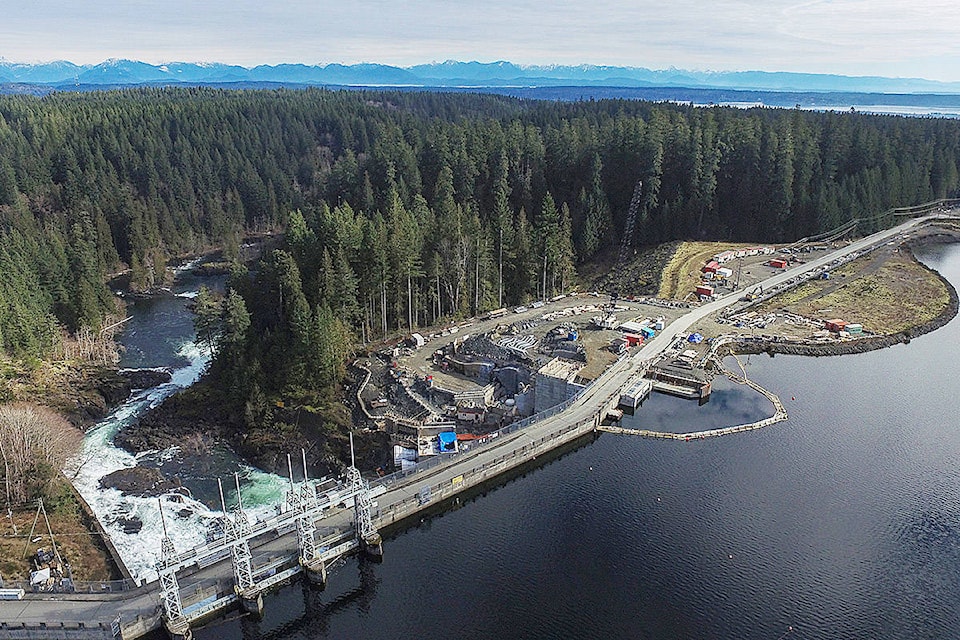The recent rainy weather has brought some relief when it comes to local water levels, according to a BC Hydro update.
About 90 mm of rain fell in the upper watershed since Thursday, Oct. 20, with most falling on Thursday and Friday. The improved water situation means BC Hydro can increase water flows downstream for fish habitat and spawning salmon.
The water release from the John Hart facilities has been about 30 m3/s and in water conservation mode for a few months, though on the night of Friday, Oct. 21, BC Hydro slightly increased the river flow to about 44 m3/s because of the rain. On Monday night, the utility increased the river flow further to about 60 m3/m.
This week, BC Hydro is raising the flow to about 100 m3/s to provide good river conditions for spawning salmon, mainly chinook. Fishers in the river after some of those salmon should be aware and be cautious of the increasing flow rate and the substantial change in river flow hydraulics when in the river with waders.
The Upper Campbell Reservoir/Buttle Lake is currently at 217.05 metres and has levelled off from the recent rains. The reservoir has come up almost one metre in elevation since last Thursday. The reservoir will begin to slowly recede as we increase river flows downstream. BC Hydro says it also typically increases the flows in the river this time of year to help lower the upstream reservoirs in anticipation of fall rains and flood risk management considerations.
Last year BC Hydro increased flows to 100 m3/s on Sept. 21. This year the increase is a bit later given the lack of water abundance until this past week. While it did increase flows earlier last year, because of a dry September and early October, it did have to reduce flows down to 80 m3/s as water levels in the upper reservoirs diminished. The forecast for the next two weeks looks dry and there may be a possibility in October that flows may again be reduced in the river to 80 m3/s. The 80 m3/s flow rate keeps the riverbed fully covered with water, including anticipated newly placed fish eggs. All of the operational changes, BC Hydro says, are in accordance and follow the seasonal discharge changes within the utility’s water licence.
The improved water storage conditions also helps the John Hart Generating Station Replacement Project. The new water bypass facility and one of the three new generators are already available. The additional water releases downstream will help with the testing of the two remaining generators so they can be operationally available and on schedule in October.
As states in a previous public notice, BC Hydro is reminding the public it is providing nine, 48-hour pulse flows down Elk Falls Canyon on the Campbell River system to benefit migrating salmon. Elk Falls is a natural barrier to fish passage, though there is good habitat between the old generating station and the falls. The first migration flow occurred last week, with the next eight every Wednesday and Thursday to Nov. 15. Flow in the canyon will increase from about 4 m3/s to about 7 m3/s. During these migration flows, and generally at any time of the year, people should stay away from the water flow upstream of Elk Falls.
